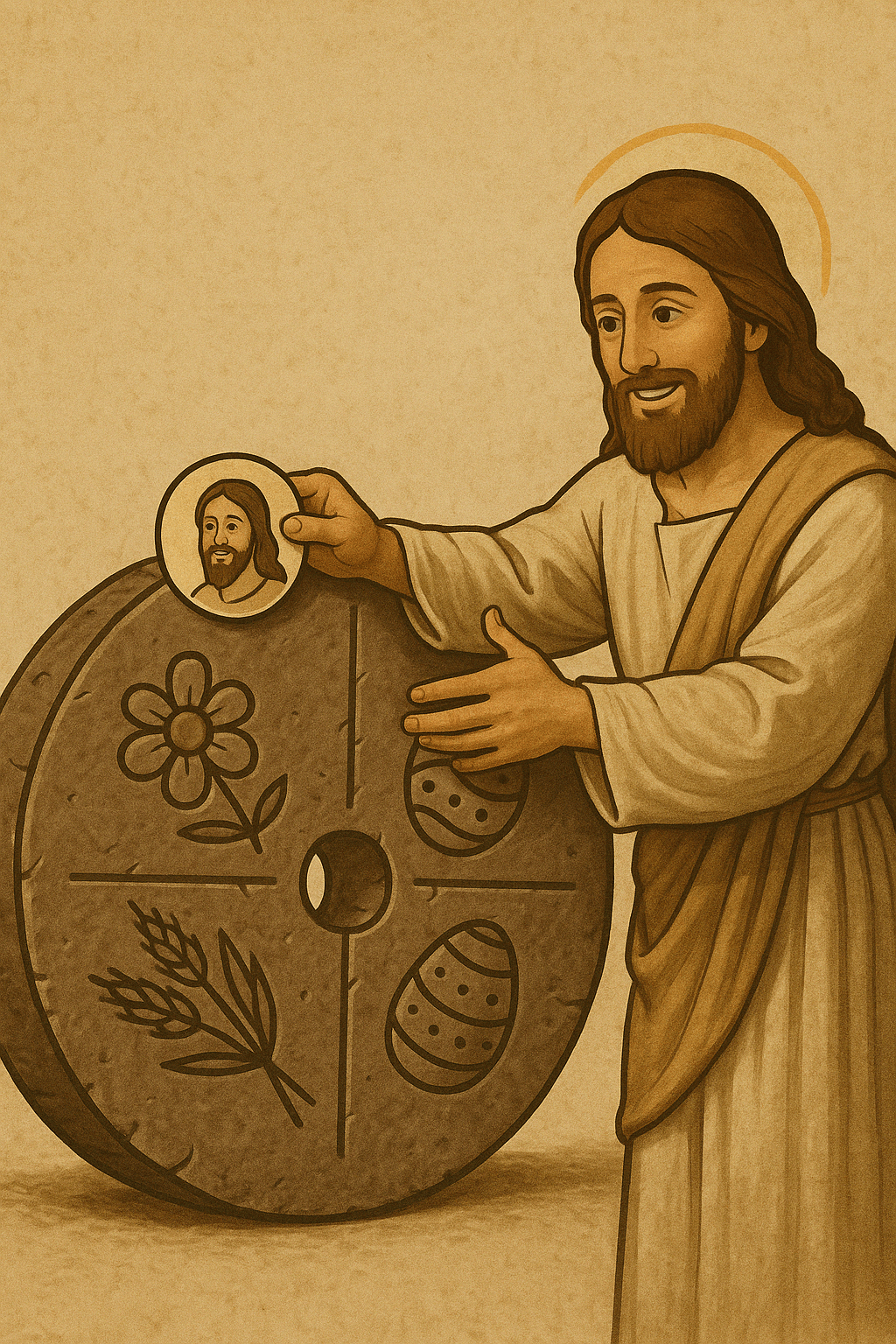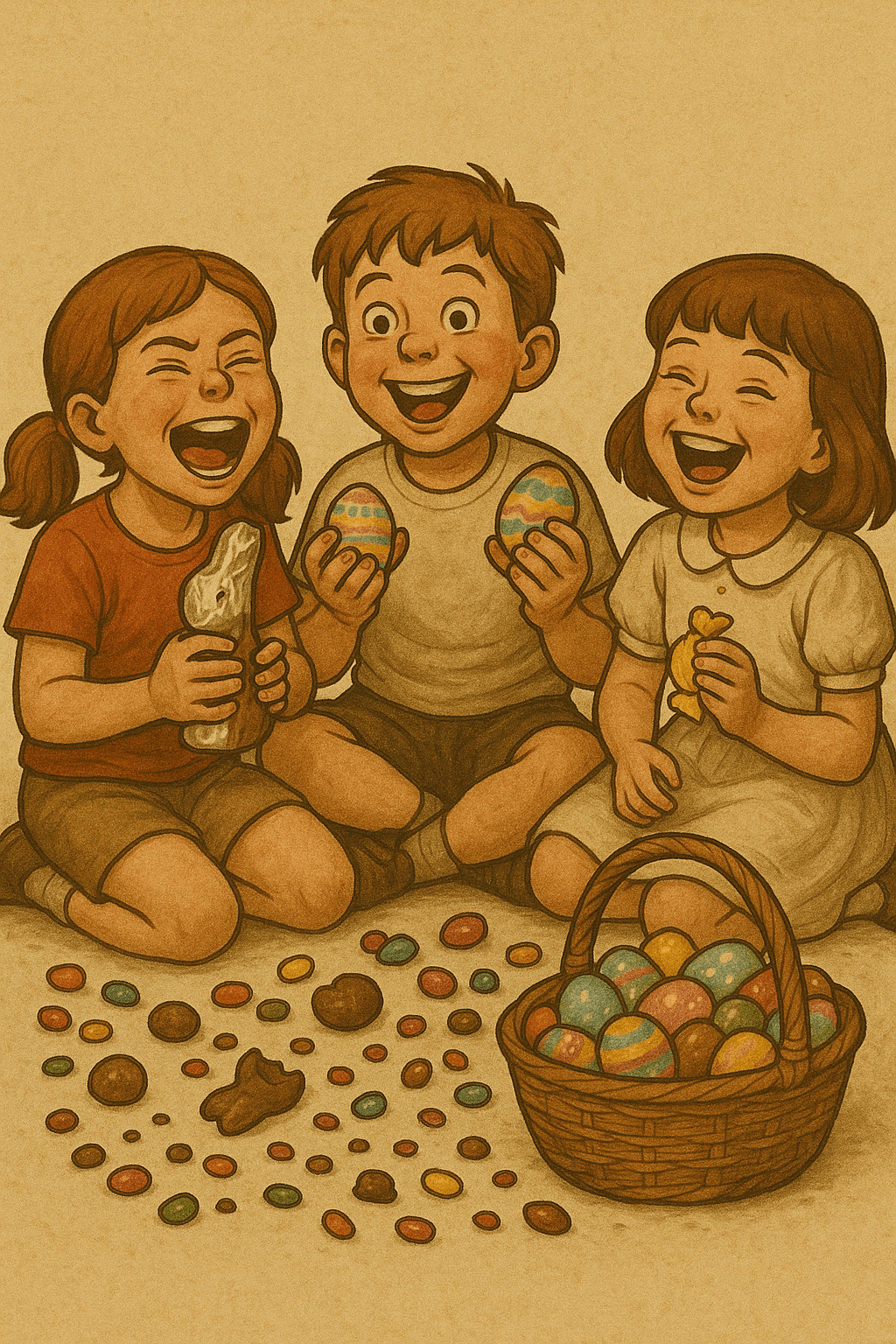Let’s Just Say It: Easter Is Bullshit
There. I said it.
Now that I’ve lost half the audience and the other half is foaming at the mouth, let me explain myself before you call the pastor or throw a plastic egg at my head. The real “blasphemy” here isn’t my refusal to participate in Easter. It’s that modern Christians celebrate it at all—without having the faintest clue where this thing even came from.
I grew up like most people, waking up on Easter morning to find a basket full of sugar bombs and hollow chocolate bunnies wrapped in that weird gold foil, surrounded by shredded neon grass that somehow ends up in your vacuum cleaner until July. We dressed in itchy pastels, took family photos no one looked happy in, and hunted plastic eggs in our yard like good little sheep.
But then I started asking questions. Dangerous ones. Like, “Why are we doing this?” And better yet, “What does any of this have to do with Jesus rising from the dead?”
Spoiler alert: it doesn’t. Not even close.
The Pagan Truth They Don’t Want You to Google
Let’s get something straight: Easter didn’t originate from Christianity. In fact, the name Easter itself is believed to come from Eostre, the Anglo-Saxon goddess of spring, fertility, and—you guessed it—bunnies and eggs.
Yeah, you read that right. We’re over here hiding eggs in the name of a fertility goddess and pretending it’s about the resurrection of Jesus. How did we get here?
Christians were notorious for slapping a Jesus sticker on pre-existing pagan festivals to make them more “relatable” to the locals. And Easter is a prime example. Early Church leaders saw all the fun happening around the spring equinox—new life, flowers blooming, birds banging—and decided to hijack the vibes for their own resurrection narrative.

You want bunnies? Sure, Jesus probably likes bunnies. Eggs? Well, those can represent new life, right? Fertility symbols? Let’s pretend that’s symbolic of spiritual rebirth!
Suddenly you’ve got a holiday that looks like a fertility cult had a baby with a church potluck.
“But I Do It for the Kids!”
Ah, yes. The old “I do it for the kids” defense. As if dressing your toddler up like a peep and tossing candy-filled eggs into the bushes is some kind of spiritual experience.
News flash: your kids don’t need another dopamine hit from a sugar basket. What they need is for someone—anyone—to have the balls to tell the truth. That a bunny doesn’t lay eggs, and Jesus wasn’t hopping around with a wicker basket 3 days post-crucifixion.
We’re training the next generation to associate “resurrection” with jelly beans. Think about that.

Let’s Talk About the Bunny in the Room
What does the Easter Bunny have to do with Jesus? Nothing. Nada. Zilch.
The bunny is a leftover from old European spring festivals where rabbits—nature’s horniest animals—were symbols of fertility. Makes sense, right? They multiply like, well, rabbits. But again, this has zero to do with the tomb being empty. Unless the tomb was made of chocolate, and the angel was wearing rabbit ears. (Spoiler: It wasn’t.)
Yet Christians parade this rodent around church lawns like he’s the 13th disciple. Y’all, make it make sense.
Resurrection or Rebranding?
Look, I believe in the resurrection. But I don’t believe in mixing it with cartoon rabbits, pastel marshmallows, or pagan goddess worship disguised as “family fun.”
If you want to celebrate Jesus, do that. You don’t need a holiday that was Frankenstein’d together by Roman politicians and early religious marketers trying to make Christianity trend with the pagans.
And if you’re just in it for the tradition, just say that. Own it. But don’t look at me sideways because I don’t buy into the Target display version of faith.
“You’re Just Bitter!”
Oh, I’ve heard that one too. I’m bitter, I’m cynical, I’m ruining the magic. Listen: what’s truly bitter is realizing most people are more comfortable repeating nonsense than facing the truth.
I’m not bitter. I’m awake. And once you see how ridiculous it is to combine church services with chocolate-covered fertility rituals, you can’t unsee it.
The Real Meaning Got Buried Under Sugar
Here’s the kicker: if you strip Easter down to what it’s supposed to mean—the victory of life over death, the idea of renewal, the invitation to spiritual rebirth—it’s actually beautiful.
But modern Easter? It’s a pharmaceutical-level sugar crash disguised as a holy day. It’s consumerism. Distraction. Noise. It’s a pastel-colored placebo that numbs people into thinking they’ve “done something holy” by attending church once and posting a photo in matching outfits.

We’re worshipping the wrong things. Again.
If You Still Want to Celebrate…
…go ahead. Seriously. I’m not here to police your traditions. Eat the candy, take the photos, hug your family. But stop pretending this is Christianity. It’s not. It’s a hybrid of pagan leftovers, Hallmark marketing, and modern convenience.
And please, for the love of truth, don’t judge the people who say, “No thanks.” We’re not lost. We’re not bitter. We’re not evil. We’re just awake enough to see the disconnect.
In Conclusion: Let’s Stop Being Chickens About the Truth
It’s not easy to reject traditions, especially the ones baked into our childhood memories. But we have to start asking: What do we actually believe? And why do we keep doing this stuff?
If your faith is rooted in the resurrection of Christ, live that truth daily—not just one Sunday a year surrounded by Peeps and fake grass. And if you’re just in it for the vibes and chocolate, own that too. But stop merging nonsense with sacredness and calling it divine.
So no, I won’t be hiding eggs this year. I won’t be lining up for church selfies or unwrapping chocolate crosses.
I’ll be doing something a little crazier: thinking for myself.
Let’s reclaim what is rightfully our’s in this digital noise we live in. Join us in this exploration of how deep the rabbit hole actually goes.

No responses yet